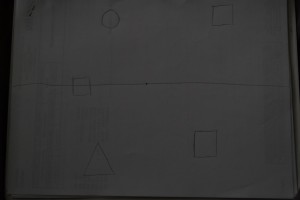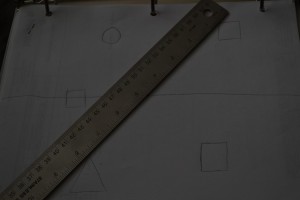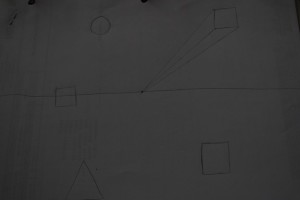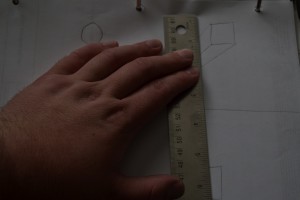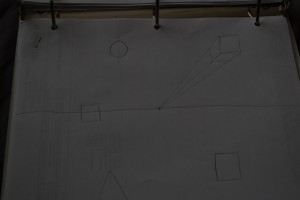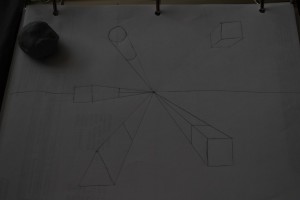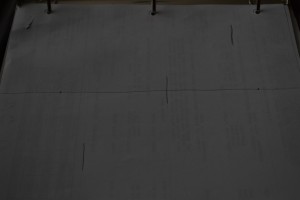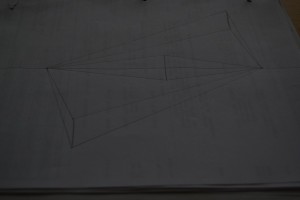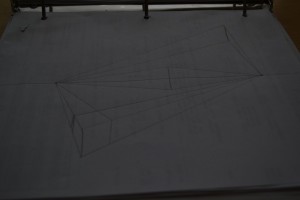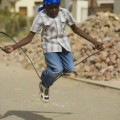Drawing is one of the simplest transitions from thought to reality. The cost of that is that it is difficult to master, sometimes taking years before you are satisfied with your skill. Even at low levels of skill, it is worthwhile. The important thing is to get the idea down. It may come out lopsided, but it is recorded. You can revisit it as you get better, and some day it will match what is in your head. This sort of thing can be like a milestone, where each time you return to an idea, you can see how much you have improved since the last time.
Beginning
You might want to start with a small drawing pad, although it would be more cost effective to buy a stack of office paper and a three-ring binder. As for the drawing instrument, you have some choices.
Pencil
A standard pencil can do a lot of different effects, depending on its sharpness. Then again, you do have to sharpen at least one pencil regularly to keep those fine lines. Alternatively, you can go with a mechanical pencil, and always have those fine lines, though you do lose some functionality in the shading department. Either way, the pencil’s main strength is that you can erase it. This is for all you perfectionists, or if you don’ want to waste paper. Speaking of erasers, you probably want to get a kneaded eraser. This will look like a grey brick, but it’s almost as fun as sticky tack, and doesn’t leave eraser shavings. You can find them in the drawing section of most craft stores, and they are pretty cheap. A word of warning about pencil drawing: beware of smudges. While it is nice to have the steadying effect of your drawing hand resting on the paper, this can smudge what you have already drawn. You can avoid this by either putting another piece of paper under your hand, or merely keeping your hand raised off the paper as you draw.
Pens
Pens are good for getting the rough idea down. I would especially recommend this for practicing figure drawing, where you are just trying to get the shape of a person, and not the actual details. Though less given to smudging than pencil, and capable of consistent fine lines, a ball-point pen will occasionally build up ink and leave a dollop on the paper, which can smear pretty easily. There are pens with erasable ink, which is pretty legit. It’s a good compromise, though I personally haven’t used them enough to say much about it.
Markers
Markers are especially good for clean lines and filling in areas. There are fine-tip permanent markers that have good line quality, though the tip can wear down with enough usage. Bleeding through is an issue with some markers, but you can usually find some that don’t bleed through.
I would urge you to try each, and see what appeals to you. You may even find yourself drifting from one instrument to another as time goes by.
Now that we have the materials, let’s get down to business. While you can draw nearly anything, you can generally categorize it as abstract, object, or living. Abstract drawings tend to be along the lines of logos, symbols, patterns, and so on. There is no real trick to this, no special techniques. Just keep practicing drawing those sorts of things, and pay attention to the logos and so on that you find in the real world.
Object drawing can be anything, things in your house, your house itself, or even landscapes. The key here is perspective. The best introduction to this is with landscapes, or more accurately, horizons and vanishing points.
With one point perspective, there is one vanishing point in the middle of the horizon. This is what you use when you are facing an object directly, and that side is represented by a two-dimensional shape. From there, you draw lines from the corners to the vanishing point. You can use pretty much any straight edge, but rulers and/or yardsticks are good, and are useful down the road.
Once you have those lines drawn, you need to set the bounds of the shape. You do this by drawing lines that run parallel to its sides.
Then erase the lines leading to the vanishing point, and you have yourself an object that seems to take up space in a realistic way. By the way, that gray ball is a kneaded eraser.
If you want to draw objects behind other objects, draw the ones closest to the front first. This way, you won’t be trying to erase around what you have already drawn.
Next, two point perspective is for when you are looking at something edge-on. As such, to draw an object in this perspective, you draw the edge you can see.
Then lines from the ends of the edge to the two vanishing points.
Then draw lines parallel to the edge to set the bounds of the sides of the object. After that, lines from the tops of the sides to the opposite vanishing point, like so:
All that’s left is erasing the guiding lines like before. As you practice perspective in this way, you will see the lines of objects leading to horizons you can’t see. As this becomes part of how you perceive the world, you will be better able to represent it in your drawing.
Living subjects
 Animals and humans are hard. They come in irregular shapes, they move around, and worst of all, you know how they are supposed to look on a very instinctual level. Figure drawing helps with the first; just try to get the general form and pose of the thing. Once you have a good idea of how your subject looks in different poses, it becomes easier to draw them after they have moved. Throughout, it helps to not think of each body part as you are drawing it. Rather than “And now the nose…” and “its legs”, try to maintain a wordless watchfulness. Your drawing will be better proportioned as you stop chopping the subject into parts, and evaluate it as a whole.
Animals and humans are hard. They come in irregular shapes, they move around, and worst of all, you know how they are supposed to look on a very instinctual level. Figure drawing helps with the first; just try to get the general form and pose of the thing. Once you have a good idea of how your subject looks in different poses, it becomes easier to draw them after they have moved. Throughout, it helps to not think of each body part as you are drawing it. Rather than “And now the nose…” and “its legs”, try to maintain a wordless watchfulness. Your drawing will be better proportioned as you stop chopping the subject into parts, and evaluate it as a whole.
If live subjects are too harrowing, try drawing from photos. Google what you want to draw, and chances are, someone has taken a picture of it, be it an exotic animal or a specific human pose. Speaking of which, drawing humans is a very trying process. Your brain has all sorts of abnormality-averse reactions, and a lot of what you draw will trigger that sense of “this is so wrong”. Fight through it. Keep practicing. Develop a more stylized way of drawing people, and your human-recognition brainware will actively help you see it as human, and less flawed for its lack of detail.
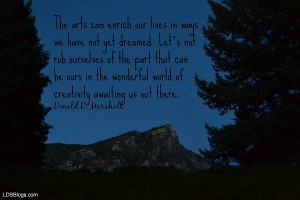 At this point, some of you may be thinking, “That’s all very fine and good, but what does it have to do with flying an airplane?” Or rather, the gospel? There are a few principles hidden in the practicalities of drawing. For instance, the principle of perspective is key to the true space of an object. Though something may seem large and hard to understand when it is right in front of us, it does not reach the infinities. If we but look to the horizon, we can see the end of our troubles, and be better able to move past them. We can reach the infinite. As Steven E. Snow of the Seventy said, “Our hope in the Atonement empowers us with eternal perspective. Such perspective allows us to look beyond the here and now on into the promise of the eternities. We don’t have to be trapped in the narrow confines of society’s fickle expectations. We are free to look forward to celestial glory, sealed to our family and loved ones.”
At this point, some of you may be thinking, “That’s all very fine and good, but what does it have to do with flying an airplane?” Or rather, the gospel? There are a few principles hidden in the practicalities of drawing. For instance, the principle of perspective is key to the true space of an object. Though something may seem large and hard to understand when it is right in front of us, it does not reach the infinities. If we but look to the horizon, we can see the end of our troubles, and be better able to move past them. We can reach the infinite. As Steven E. Snow of the Seventy said, “Our hope in the Atonement empowers us with eternal perspective. Such perspective allows us to look beyond the here and now on into the promise of the eternities. We don’t have to be trapped in the narrow confines of society’s fickle expectations. We are free to look forward to celestial glory, sealed to our family and loved ones.”
While we may not be able to present a perfect rendition of a human being, we know what such a thing looks like. As we study the forms and actions of the great exemplar, the truest model, we can better emulate those forms. Drawing is an art of both imitation and creation. What more fitting skill for those who would be like the Creator?
About Brandon Quist
Brandon is originally from Olmsted Falls, Ohio. He has studied both at Baldwin Wallace college and Brigham Young University, and is currently pursuing Chemical Engineering, among other things. He considers himself a jack of all trades, and a master of none. In his spare time, Brandon enjoys knitting, guitar, reading, origami, writing, and photography.


